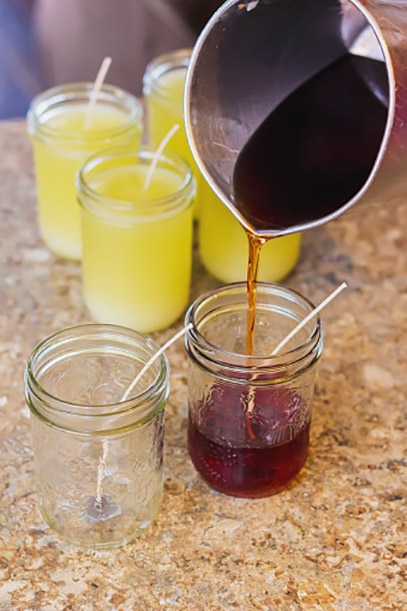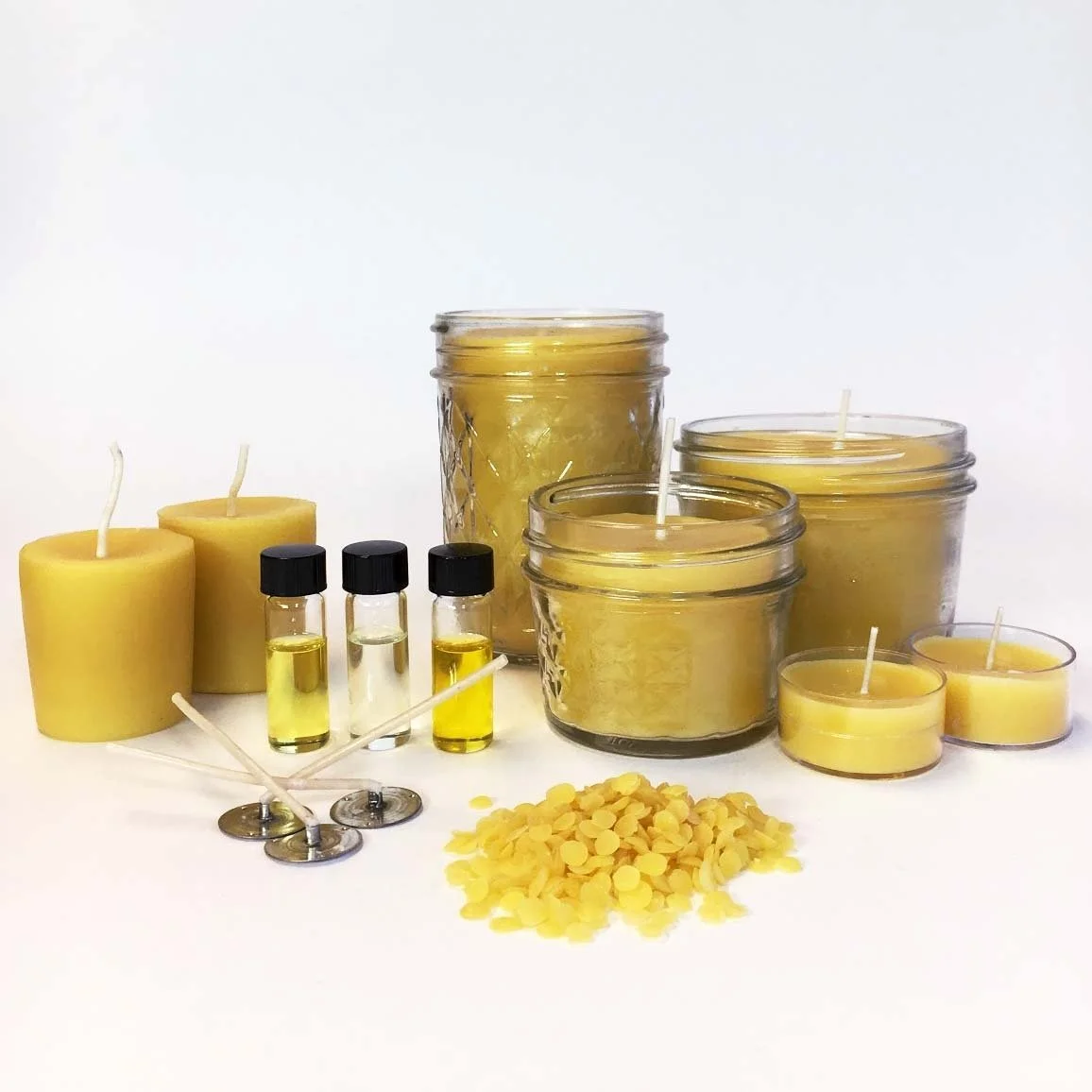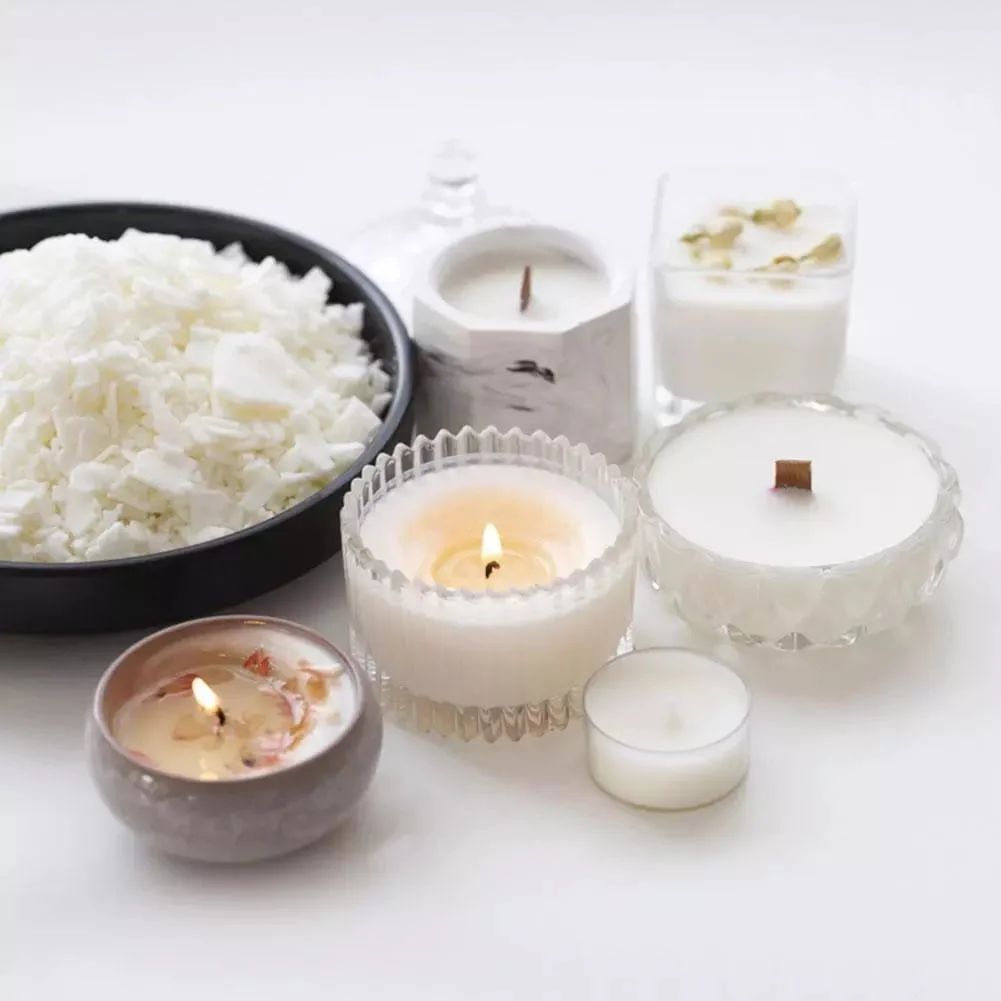Are you looking to elevate your candle making game? Look no further than the world of essential oils. Adding essential oils to your candles can provide incredible aromatherapy benefits and create a unique sensory experience for anyone who lights them. In this article, we will explore the art of candle making with essential oils, including how to choose the right oils, the benefits of using them, and some helpful tips and best practices for incorporating them into your creations.
When it comes to infusing your candles with delightful scents, nothing beats the natural essence of essential oils. Whether you’re a seasoned candle maker or just dipping your toes into the craft, understanding how to use essential oils effectively is key to creating beautiful and aromatic candles that everyone will love.
From lavender to citrus to peppermint, there’s a wide array of essential oils to experiment with, each offering its own unique properties and benefits that can enhance the ambiance of any space.
Choosing the right essential oils for your candles is an important decision that can greatly impact the overall quality and experience of your final product. With so many options available, it’s essential to understand which scents complement each other and how they interact with different wax types.
By exploring the characteristics and uses of various essential oils, you can ensure that you’re selecting the perfect ones for your specific candle making needs. So, let’s dive into the wonderful world of candle making with essential oils and discover how you can take your creations to new aromatic heights.
Understanding Essential Oils for Candle Making
When it comes to understanding essential oils for candle making, it is important to consider the various types of essential oils available and their unique properties. Essential oils are highly concentrated plant extracts that add fragrance and therapeutic benefits to candles. They are derived from different parts of plants, including flowers, leaves, stems, and roots, through processes such as distillation or cold pressing.
One key aspect to understand about essential oils for candle making is their volatility, which refers to how quickly they evaporate. Some essential oils have a high volatility, meaning they evaporate quickly and release their aroma into the air faster, while others have a lower volatility and release their fragrance more slowly. This is an important factor to consider when choosing the right essential oil for your candles based on the desired strength and longevity of the scent.
Another important consideration when understanding essential oils for candle making is their individual scent profiles and categorizations. Essential oils can be classified into different fragrance families such as floral, citrus, herbal, woody, spicy, and more. Each type of essential oil carries its own unique set of properties and potential benefits when used in candle making.
Choosing the right essential oil for your candles is an important decision that depends on personal preferences as well as the desired effects of the aromatherapy. It’s also crucial to ensure proper usage amounts based on the volume of wax being used in order to create a well-balanced fragrance without overpowering or underwhelming the senses.
| Types of Essential Oils | Volatility Level |
|---|---|
| Lavender Oil | Low Volatility |
| Lemon Oil | High Volatility |
| Sandalwood Oil | Medium Volatility |
Choosing the Right Essential Oils for Your Candles
When it comes to choosing the right essential oils for your candles, there are a variety of factors to consider. Each essential oil has its own unique scent, therapeutic properties, and compatibility with different candle making materials. Here are some tips to help you select the best essential oils for your candle making projects:
- Consider the Scent Profile: Some essential oils have a strong, distinct aroma, while others are more subtle and blend well with other scents. Consider the fragrance profile you want for your candles and choose essential oils that complement each other.
- Therapeutic Benefits: Certain essential oils offer therapeutic benefits such as relaxation, stress relief, or energy enhancement. If you want to create candles that serve a specific purpose beyond just providing a pleasant scent, consider the therapeutic properties of the essential oils you choose.
- Compatibility with Candle Making Materials: Not all essential oils are suitable for use in candle making. Some oils can interfere with the burning process or react negatively with certain candle materials. Be sure to research the compatibility of each essential oil with the wax and wick types you plan to use.
Once you have considered these factors, you can then begin experimenting with different combinations of essential oils to create unique scents for your candles. Whether you prefer floral, citrusy, woody, or herbal aromas, there are endless possibilities for creating custom scents using high-quality essential oils.
In addition to considering scent profiles and therapeutic benefits, it’s also important to choose pure and high-quality essential oils for your candles. Look for reputable suppliers that offer organic or natural essential oils without added synthetic fragrances or fillers. By selecting top-notch ingredients, you can ensure that your handmade candles will carry the true essence of the chosen essential oils.
Benefits of Using Essential Oils in Candle Making
When it comes to creating the perfect candle, using essential oils can elevate your craft to the next level. Essential oils are not only known for their pleasing scents, but they also offer a variety of benefits that can enhance the overall experience of burning a candle.
One of the main benefits of using essential oils in candle making is the natural fragrance they provide. Unlike synthetic fragrances, essential oils are derived from plants and flowers, giving off a pure and authentic aroma. This can have a positive impact on mood and well-being, as certain essential oils are known for their calming, uplifting, or energizing properties.
In addition to their aromatic qualities, essential oils also have potential health benefits when used in candles. For example, certain essential oils such as lavender or eucalyptus are known for their stress-relieving and respiratory support properties. When these oils are dispersed into the air through a burning candle, they can promote relaxation and even improve air quality in the surrounding environment.
Finally, many individuals choose to use essential oils in candles because they prefer natural products in their home. By opting for candles scented with essential oils rather than artificial fragrances, people can create a healthier indoor atmosphere while enjoying the benefits of aromatherapy.
| Benefits of Using Essential Oils | In Candle Making |
|---|---|
| Natural fragrance | Potential health benefits |
| Aromatherapy | Improved air quality |
Tips for Using Essential Oils in Candle Making
When it comes to creating scented candles using essential oils, there are a few tips and tricks to keep in mind to ensure the best results. Essential oils are potent and concentrated, so it’s important to use them carefully and with caution.
Choose High-Quality Oils
The quality of the essential oil you use will greatly affect the scent and overall quality of your candles. Look for pure, high-quality essential oils from reputable sources. Cheaper oils may be diluted or contain synthetic additives that can affect the scent and performance of your candles.
Measure Carefully
When adding essential oils to your candle wax, it’s crucial to measure them carefully. Too much oil can overpower the scent and even affect the burn of the candle. As a general rule of thumb, aim for about 1 ounce of essential oil per pound of wax. However, some oils may require more or less depending on their potency, so be sure to read and follow specific recommendations for each oil.
Experiment With Blending
One of the benefits of using essential oils in candle making is the ability to create unique scent blends. Experiment with combining different oils to create custom fragrances for your candles. Keep track of your experiments so you can replicate successful blends in the future.
By following these tips, you can make the most out of using essential oils in your candle making endeavors. Remember to handle these potent oils with care and always test your creations before selling or gifting them.
Best Practices for Scenting Candles With Essential Oils
When it comes to adding essential oils to your homemade candles, there are a few best practices to keep in mind to ensure that you get the most out of your scented candles. Whether you are new to candle making or have been doing it for years, these tips will help you achieve the perfect balance of fragrance and performance in your candles.
Use High-Quality Essential Oils
One of the most important best practices for scenting candles with essential oils is to use high-quality oils. When selecting essential oils for your candles, look for pure, undiluted oils that are specifically designed for candle making. Lower quality oils or those that are diluted with other substances may not provide the desired level of fragrance or could affect the burn quality of your candles.
Experiment With Different Combinations
Another best practice for scenting candles with essential oils is to experiment with different oil combinations. Some scents work well on their own, while others can be enhanced by blending them with complementary fragrances. Take the time to explore different scent combinations and find unique blends that reflect your personal style or seasonal themes.
Be Mindful of Dosage
It’s also important to be mindful of dosage when adding essential oils to your candles. While it can be tempting to add more oil for a stronger fragrance, using too much can negatively impact the burning characteristics of the candle. Follow recommended guidelines for each type of essential oil and consider using a fragrance calculator to ensure that you are adding the correct amount for safe and effective scenting.
DIY Candle Making Recipes Using Essential Oils
Using essential oils in candle making can create beautiful, aromatic candles that can set the mood in any space. Whether you are a beginner or an experienced candle maker, incorporating essential oils into your candles can add a personal touch and allow you to customize the scents to your liking. Below are some DIY candle making recipes using essential oils that you can try at home:
- Lavender and Vanilla Candle: To make a soothing and calming candle, combine 20 drops of lavender essential oil with 10 drops of vanilla essential oil. These two scents together create a relaxing and comforting aroma that is perfect for unwinding after a long day.
- Citrus Bliss Candle: For a refreshing and energizing scent, mix 15 drops of lemon essential oil, 10 drops of orange essential oil, and 5 drops of grapefruit essential oil. This citrus blend is great for creating an uplifting atmosphere in any room.
- Rose and Sandalwood Candle: Create a luxurious and romantic ambiance with this combination of 18 drops of rose essential oil and 12 drops of sandalwood essential oil. The floral notes combined with the warm woodsy scent adds elegance to any space.
These are just a few examples of DIY candle making recipes using essential oils, but the possibilities are endless. When experimenting with different scents, it’s important to keep in mind the ratio of essential oils to wax to ensure that the candles burn properly and emit the desired fragrance. Additionally, always follow safety guidelines when working with essential oils and handle them with care.
Incorporating essential oils into your candle making process allows you to create unique scents that cater to your preferences. With the right combinations, you can elevate the ambiance of any room while enjoying the therapeutic benefits that each essential oil provides. Experimenting with different combinations will not only enhance your candle making experience but also allow you to create personalized gifts for friends and family.
Conclusion
In conclusion, essential oils play a crucial role in candle making, offering a wide variety of scents and therapeutic benefits. Understanding the different types of essential oils and how to choose the right ones for your candles is essential in creating high-quality products. The benefits of using essential oils in candle making go beyond just adding fragrance, as they can also provide relaxation, stress relief, and even purification when used in aromatherapy.
When using essential oils in candle making, it’s important to keep in mind some key tips and best practices to ensure a successful outcome. This includes being mindful of the scent concentration, experimenting with different oil combinations, and considering the impact of the oil on the candle’s performance.
For those looking to get creative with their candle making, there are plenty of DIY recipes available that incorporate essential oils. Whether it’s crafting personalized gifts or simply enjoying the process of creating unique blends, the possibilities are endless when combining different essential oils for candle making.
With careful consideration and experimentation, you can find the perfect combination of essential oils to elevate your candles and create a truly memorable experience for yourself or others. Ultimately, the power of essential oils in candle making lies not only in their fragrance but also in their ability to enhance mood and well-being.
Frequently Asked Questions
What Essential Oils to Use for Candle Making?
When making candles, it’s important to choose the right essential oils that will complement the intended use of the candle. For relaxation, lavender or chamomile essential oils can be used. For an uplifting scent, citrus oils like lemon or orange are great options.
What Is the Ratio of Essential Oils to Wax for Candles?
The ideal ratio of essential oils to wax for candles is generally around 6-10% of the total wax weight. This means that for every pound of wax, you would use approximately 1 ounce of essential oil. It’s important not to exceed this ratio as too much essential oil can affect how the candle burns.
How Many Drops of Essential Oil in Homemade Candle?
The number of drops of essential oil in a homemade candle will depend on the amount of wax being used and the desired strength of the scent. As a general guide, for every pound of wax, you can start with about 30-40 drops of essential oil.
However, it’s always best to start with a smaller amount and adjust as needed based on personal preference.

Welcome to my candle making blog! In this blog, I will be sharing my tips and tricks for making candles. I will also be sharing some of my favorite recipes.





